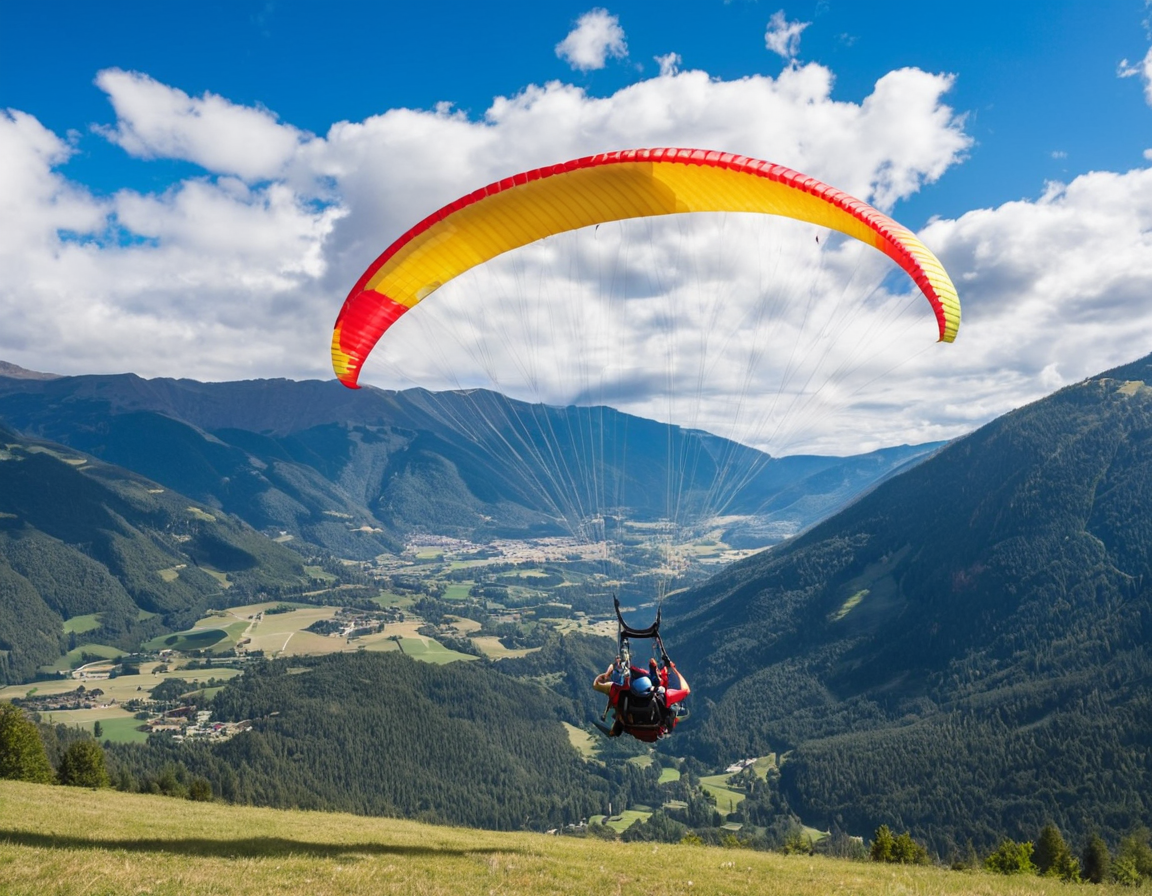: Unleash Your Wings: A Beginner’s Guide to Paragliding in [Location]

Embark on an exhilarating adventure and unveil the breathtaking panoramas of [location], as you soar through the skies like a bird, with our comprehensive beginner’s guide to paragliding. Nestled amidst the lush landscapes and picturesque vistas of [Location], paragliding is an experience that transcends boundaries, offering both thrill-seekers and nature enthusiasts alike a chance to witness the world from an entirely new perspective.
Before you can take flight, it’s essential to grasp the fundamental concepts behind this exhilarating sport. Paragliding involves piloting a lightweight, free-flying glider aircraft that harnesses wind currents and thermals for lift and propulsion. This enables paragliders to achieve sustained airborne periods without any external power source, as they traverse the skies at altitudes ranging from 500 feet above ground level (AGL) up to over 15,000 feet in professional competitions.
To begin your paragliding journey in [Location], here are some crucial steps and considerations:
1. Gear Up with the Essentials: Before embarking on a paraglide adventure, ensure you have all necessary equipment, including a certified paraglider wing, harness, helmet, reserve parachute (as backup), vario instrument for detecting thermal air currents, and a rucksack or backpack to store your essentials during the flight.
2. Enroll in Paragliding Courses: As a beginner, it is imperative to enroll in an introductory paragliding course taught by certified instructors who can impart vital knowledge on safety procedures, wing control techniques, takeoff and landing maneuvers, and weather conditions that affect flight.
3. Choose Ideal Launching Sites: The key to a successful first-time paraglide experience is selecting an appropriate launch site with minimal hazards such as trees, power lines, or steep terrain near the takeoff area. [Location] offers several designated sites for novice pilots, including [specific locations and their unique features].
4. Weather Conditions Matter: Paragliding heavily depends on atmospheric conditions like wind speed, direction, thermals, and air pressure. Always check weather forecasts before planning a paraglide trip to avoid potential hazards associated with turbulence or strong winds. Ideal flying conditions in [Location] are generally calm mornings with light to moderate winds.
5. Safety First: Remember that safety is paramount when embarking on any adventure sport like paragliding. Always fly within your skill level and limits, adhere strictly to established flight guidelines, maintain constant communication with fellow pilots or ground crew members during the flight, and never hesitate to seek professional help if you encounter difficulties.
Now that you have a comprehensive understanding of what it takes to embark on an exhilarating paragliding journey in [Location], there’s no better time than now to start planning your adventure! Embrace the thrill of soaring through the skies, taking in breathtaking vistas, and experiencing life at its most raw and untamed.
Keyword Rich Visuals: Paraglider flying over stunning mountain ranges or coastlines, close-ups on essential paragliding gear like harnesses, wings, helmets, etc., scenic aerial shots showcasing the breathtaking landscapes of [Location].

